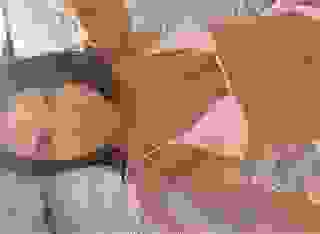- Non-Erotic
- The Northridge Earthquake
Note: You can change font size, font face, and turn on dark mode by clicking the "A" icon tab in the Story Info Box.
You can temporarily switch back to a Classic Literotica® experience during our ongoing public Beta testing. Please consider leaving feedback on issues you experience or suggest improvements.
Click hereOn January 19, 1994 at 4:30am, the Northridge Earthquake, measuring 6.7, produced the strongest ground motions ever instrumentally recorded in an urban setting in North America.
Damage was widespread, sections of major freeways collapsed, parking structures and office buildings collapsed, and numerous apartment buildings suffered irreparable damage.
Damage was very widespread in the San Fernando Valley and Santa Monica areas. The high accelerations, both vertical and horizontal, lifted structures off of their foundations and/or shifted walls laterally.
I was the Safety Officer and Employee Health Nurse for a large hospital on the Westside of Los Angeles. The earthquake hit at about 4:30am. I was living in Venice, California and had spent my whole life, growing up in earthquake country.
It takes at least a 5 pointer to even wake me up. I knew instantly this one was big. It's funny what you think about during a large quake. My first thought was "It's the BIG ONE!" Then when the shaking stopped my thoughts said, "No it's not."
I could see my large two foot in diameter, glass fishbowl, which I had suspended from the ceiling with a long chain, swing out from its normal position about 3-4 feet, and start to swing back, directly toward the TV. "Noooooooooooo! I thought and sprang to my feet, catching the glass bowl just seconds from the time it would have crashed into the Television Set.
I figured that the hospital had probably sustained a lot of damage and I needed to get there quickly. We had drilled for earthquakes in the past and there was an emergency disaster plan in place for just such an occasion.
As Safety Officer and being the closest Disaster Team Member to the hospital, I knew I had to immediately report to the hospital to survey the damage.
The first thing I noticed as I was driving was that there were no streetlights or traffic signals working. I could hear electrical circuit breakers exploding all over town. It reminded me of the sound of the gunfire I had heard in combat.
Other drivers on the street were driving erratically, running blindly through busy intersections instead of coming to a complete stop, as they would have if traffic lights had just been out of order. General chaos reigned.
As I drove up to the hospital I could see the eight-story structure was in complete darkness with the exception of the Emergency Room Area. That meant our backup generator had failed.
We had no electrical power, no lights, no elevators, and no respirators. This was very bad!
I went into the ER and spoke with the doctor on duty, head nurse and a small group of employees who informed me that our main backup generator designed to provide power during a blackout not only was not working but was leaking diesel fuel fumes throughout the 4th, 5th, and 6th floors of the pavilion building.
Fortunately the ER had its own generator, which was still functional.
Patients on the 4th, 5th and 6th floors needed to be evacuated due to exposure to the diesel fumes. The main problem was, the elevators were not working and most of the stairwells were impassable due to damage.
We broke into four teams of six people, and collected some stretchers and flashlights. We found two stairwells, which seemed to be in fairly good shape and headed up to the 4th, 5th and 6th floors.
There was flooding throughout the building. Ambulatory patients were guided down the stairwells to the evacuation area, a parking lot across from the hospital and non-ambulatory patients were carefully carried down stairwells in wire stretchers.
Patients on respirators were being kept breathing by rotating staff, volunteers and other patients in the ER, using hand-held ambu-bags to provide the life-saving air to patients who could not breath on their own.
Chairs, gurneys and blankets were being set up in the parking lot for the evacuated patients but there were not enough blankets to provide warmth for the now, shivering patients in the pre-dawn morning.
Securing additional blankets from Central Supply was a problem due to the fact that the main entrance was partially blocked due to structural damage.
Finally we were able to squeeze through the rubble to the supply room and get some blankets.
More blankets were rounded up from other units, which had not been exposed to fumes nor needing patient evacuation.
As the sun started to rise and more of the hospital became visible in the daylight, the extent of the damage became more obvious.
At least one third of the hospital was "red tagged" which meant the damage was so severe that complete evacuation of those areas were mandated.
The Command Center was moved from the overcrowded ER to the main lobby.
Employees who were not prevented from reaching the hospital due to freeway or street damage problems, started checking in and teams were set up to move, care for, feed patients and relieve night staff.
Most of the night staff refused to leave and insisted on staying and helping. Many employees, not scheduled to work, showed up anyway.
Food and water was brought in by trucks, already prepared for the staff and patients.
Staff and patients from a nearby hospital that had to be completely evacuated, due to the fact that the entire building had been shaken off it's foundation, were transferred to ours and other nearby hospitals.
During the next few weeks the staff, and volunteers, through their Herculean efforts were able to return some semblance of order to the hospital.
The most helpful thing which had occurred was a earthquake drill which was held one month before the actual earthquake and uncovered a lot of problems.
Most of the problems found were corrected prior to the actual Earthquake. Disaster drills save lives and uncover existing problems.
I will never forget this experience or the brave staff, patients and volunteers at the hospital. It's amazing what people, in extreme situations, can accomplish when they pull together.
- COMMENTS








